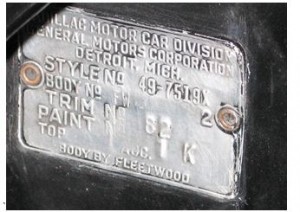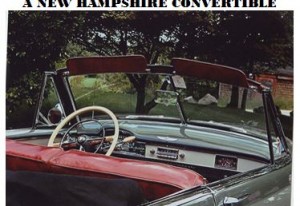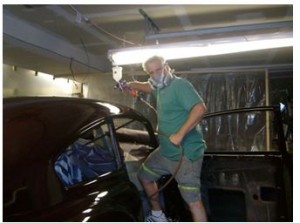During the 24 years I’ve owned my 6107, it has been afflicted at least twice with a mysterious noises emanating from somewhere underneath the car. In both instances, though I continually tried to figure out where the sounds were coming from, and asked every knowledgeable car guy of my acquaintance for their advice, it was only when I finally consulted a local shop that specializes in this sort of thing that the problems were resolved.
The establishment in question is Doraville Driveline and Spring, located not far from my house in the Atlanta suburb of that name. (No telling who “Dora” was.) DD&S is one of those old time establishments, kind of mysterious and dark, filled with lots of neat looking older machinery and staffed by a bunch of guys who live and breathe drivelines, springs and related components.
The first set of noises that existed from the time I bought the car until 16 years ago was a cacophony of creaks and groans that came from somewhere underneath whenever I started out from a stop or took my foot off the accelerator pedal. It was all the more embarrassing when a sound video made at the CLC Grand National in Lancaster PA in 1993 had a shot of my car starting to roll with the aforementioned noises loud and clear. Chapter member Bob Knutson, who lives nearby, recommended DD&S, whose manager told me that replacing my rear leaf springs would cure all these ills. A new pair was ordered from the Triangle Spring Company in Pennsylvania and then installed. Following this operation, my ’49 stayed quiet for some years.
Then, about a year ago, my car’s gear shift lever began to rattle at high speeds. (Manual transmission ’49s like mine don’t have the same anti-rattle spring for the gear shift lever as Hydra-matic cars.) Taking a shot, I replaced the motor mounts, then took out the clutch which I had rebuilt and balanced, but the annoying rattle persisted.
When I drove to the Grand National in Cherry Hill, New Jersey last August, not only did the rattling become worse, but it was joined by squeaks and clanks from under the car that would come and go for no apparent reason. Though these sounded like a discordant symphony orchestra, looking under the car did not reveal anything amiss. As you can imagine, every CLC’er present at the Grand National whose opinion I sought had a different theory. One evening, with my patient wife holding the tools and several other GN attendees supervising, I took off both rear brake drums to check for broken brake springs, but they were fine. I then tightened all the rear stabilizer and exhaust system bolts. Nothing changed.
Meet Chairman Jack Hotz then arranged an appointment for me and my ’49 at his favorite garage, Majic Auto Repair in nearby Haddonfield. Raising the car on his lift, Majic’s owner could not detect a definite fault, though he was convinced the problem was with either the driveshaft or the clutch throwout bearing.
Back home, I finally did what I should have done in the first place and drove the car over to Doraville Driveline and Spring. Like Majic back in NJ, the manager thought the problem was the driveshaft, so he climbed under the car to closely examine it. He said no one part of it was in very bad condition, but the front and rear universal yokes and both universal joints were somewhat worn, which cumulatively added up to lots of wear and caused all the sounds. Also, the driveshaft tube itself was full of dents and dings, rendering it out of balance and causing the gear shift lever rattle.
A phone call bought a NOS front yoke from Ted Holcombe Cadillac Parts which I had shipped to DD&S. Meanwhile DD&S had in stock a used dent-less driveshaft tube with a perfect rear yoke along with new universal joints. DD&S put all these together. When I installed the rebuilt driveshaft in my Cad and took it for a ride all its noises were gone. Another lesson learned.


